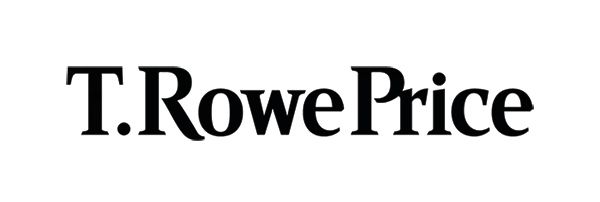How to make diversification work with equities and bonds
Creating the right portfolio mix is vital

Inflation has had a lasting effect on many economies across the globe, leaving savers and borrowers alike scratching their heads to work out what the best next step might be.
Just a year ago, people were asking the question, 'Is the 60:40 portfolio dead?'.
But with inflation soaring, and central banks working hard to keep inflation in check through raising rates, yields on bonds have become very attractive.
But how should clients' portfolios be structured to take advantage of both equities and bonds?
True, every client is different and bespoke approaches and regular reviews should be carried out to make sure clients' investments remain on track. But what sensible strategies can be put in place now to help clients make the most of both equities and bonds, and what sort of diversification methods ought to be employed on portfolios?
The CPD feature that follows aims to explain some useful rules of thumb to put in place when it comes to diversification and understanding the role that both fixed income and equities play within a portfolio.
simoney.kyriakou@ft.com

CPD: How to make diversification work with equities and bonds


Choosing the right balance takes time and consideration. (Rahul Pandit/Pexels)
Choosing the right balance takes time and consideration. (Rahul Pandit/Pexels)

Bond investments can work nicely within a portfolio for diversification and yield. (Ann H/Pexels)
Bond investments can work nicely within a portfolio for diversification and yield. (Ann H/Pexels)

Getting the perfect blend within a portfolio helps to diversify and optimise the overall performance of the investments (Rebecca Diack/Pexels)
Getting the perfect blend within a portfolio helps to diversify and optimise the overall performance of the investments (Rebecca Diack/Pexels)
The diversification provided by investing in both bonds and equities is so fundamental to modern investment theory that it has its own shorthand: the 60-40 portfolio.
While most investors will deviate from this specific rule depending on their circumstances, the general idea is that investing 60 per cent of a portfolio in equities and 40 per cent in bonds should – in theory – minimise your risk while still producing returns.
However, the turbulence of recent markets has certainly put it to the test. According to Morningstar, in 2022 the 60-40 portfolio suffered its worst year since the 2008 global financial crisis.
But times are changing. With inflation subsiding and market pricing in that central banks may have finished hiking rates, the traditional blend of bonds and equities is looking attractive again.
As Tom Hibbert, investment analyst at Canaccord Genuity Wealth Management, says: “Diversification is back.”
So, how can bonds offer diversification to equities, which bonds work best and are there any alternatives? This guide will explore the opportunities in the bond market and comes with an indicative 30 minutes of CPD.
The case for bonds
The basic reason that bonds work well as a diversifier to equities is that they tend to react differently to the same economic situation. This means that, most of the time, at least one part of your portfolio will be working well.
During periods of growth, equities tend to perform well. Central banks do not need to stimulate and instead need to control inflation.
This means rates rise and bond prices fall, so in this high growth environment, equities perform well while bonds perform poorly, according to Hibbert.
“Conversely, during periods of recession, equities tend to perform poorly. Central banks move to more dovish policies and slash interest rates, and this results in rising bond prices.
“It’s this negative relationship that makes bonds the best diversifier for a portfolio of equities.”
It’s this negative relationship that makes bonds the best diversifier for a portfolio of equities.
There is also what is known as the 'safe haven trade', which can help bond prices rise when stock prices fall. When stock markets are in trouble and going through a negative shock, investors can get spooked and sell equities, often moving their money into what is considered a 'safe' investment, like government bonds.
Hal Cook, senior investment analyst at Hargreaves Lansdown, says: “Investors buy government bonds and tend to do so quite a lot, and this increase in demand increases the price of these government bonds.
“So precisely at a time when equities will be losing value, some bonds will be increasing in value, providing diversification.”
Bonds can also help diversify against the volatility equities can bring to a portfolio, thanks to their fixed cash flow through paying fixed coupon payments.
They tend to experience lower volatility over the long term, but also provide a lower level of return. However, for some investors, such as those who need to draw on their investments, the lower volatility can be appealing.
Which bond is best
When deciding the best type of bonds to use as diversification for equities, the easy answer is a medium-term, high-quality government bond, such as UK gilts or US treasuries.
Developed market government bonds are considered the 'safest' investment, as it is very unlikely that they will be unable to repay the debt, and are most likely to rise in price when stock markets are falling.
“The most effective way to diversify equity exposure is to buy bonds that are fundamentally least like equities in their makeup and, from that perspective, the highest quality government bonds will look least like equities over the long term,” says James Klempster, deputy head of multi-asset at Liontrust.
In a world of high (and uncertain) inflation, Tara Jameson, co-manager of the Schroder global multi-asset portfolios, suggests opting for government bonds in those economies that are furthest along in their fight against inflation.
She explains: “It is likely to be a year where we see greater regional divergence and investors will need to be dynamic in their asset allocation.”
T Rowe Price relies on a diversified global portfolio of government bonds, with a bias towards proven safe havens such as US treasuries, German bunds or Japanese government bonds, for instance. This also provides exposure to different currencies, said Michael Walsh, the asset manager’s solutions strategist.
It is likely to be a year where we see greater regional divergence.
But nominal government bonds are not the only bond of choice for a diversified portfolio.
Chris Clothier, fund manager of the CG Portfolio UK index-linked bond fund, argues that index-linked bonds are the best kind of diversifiers to equities.
He says: “They perform better than nominal bonds in periods of high inflation so are more likely to be negatively correlated to equities when inflation is high.
“They are also the closest thing to an all-weather investment, as they perform well under a wide range of macro-economic scenarios. The only scenario where they are expected to perform poorly is in the recovery-growth phase of an economic cycle.
“Finally, index-linked bonds have outperformed nominals since the turn of the century. We expect this to continue, especially if inflation proves to be structurally higher over the next 20 years.”
While government bonds are typically thought of as the strongest and most common diversifier to equities thanks to their negative correlation, Robin Ellis, divisional director of portfolio strategies at St James’s Place, points out that corporate bonds could also provide some diversification across a market cycle.
He adds: “These bonds are likely to fall at the same time as equity markets, but they can provide regular, reliable growth.
“It’s a common trope that equities outperform bonds over long time periods, but this isn’t always the case. In benign environments where economic growth is neither strong nor weak and equity markets are flat, high-yield bonds can provide investors much-needed regular growth.”
Indeed, the MSCI World index returned 21.5 per cent between 2000 and 2010, while the high-yield bond market returned 136.5 per cent.
A guaranteed negative relationship?
While diversified investors were well-rewarded for decades leading up to last year (the yearly return of a 60 per cent US stock and 40 per cent US bond portfolio from 1926 to 2021 was 8.8 per cent, according to Vanguard), the aftermath of the pandemic somewhat rocked the boat.
Instead of seeing part of their portfolio increase in value, investors watched as every asset class fell.
“In times of extreme market stress, the correlation of almost all assets rises,” says Laith Khalaf, head of investment analysis at AJ Bell.
“We’ve seen a period of rising interest rates, which has led to fairly consistent negative returns from bonds, and so when the equity market has dropped, that has been in tandem with fixed income markets.”
Ben Seager-Scott, head of multi-asset portfolios at Evelyn Partners, agrees that inflation is the kryptonite to the diversified portfolio.
He notes: “We’ve been in a low inflation environment for so long, it’s easy to forget that both bonds and equities are vulnerable to inflation shocks and tend to move in lock-step when inflation is driving. You can’t rely on a constant relationship between the two.”
And Clothier points out that before the perfect storm of 2022, government bonds were overpriced.
“The other reason is quite simple: valuation. In 2020-21 government bonds were in an almighty bubble. If you pay too high a price for an asset, it is unlikely to deliver satisfactory returns under any macroeconomic environment.”
Over the long term, however, bonds should still provide a strong level of diversification.
Klempster says that while it was always possible for bonds and equities to display positive correlation – and that we saw an unusually high level in 2022 – it was unusual to see bonds and equities have a strong positive correlation over the medium to long term.
Pinning down the split
As with most asset allocation decisions, the exact proportion of a portfolio that you allocate to bonds will depend on the investment objectives and the risk tolerance of the investor.
Advisers tended to back bonds. Alistair Cunningham, financial planning director at Wingate Financial Planning, says he uses bonds for all clients unless they were exclusively in equities or cash due to having a high risk profile, and that the bond allocation could range from 0 to 100 per cent.
Tim Morris, from Russell & Co Financial Advisers, agrees. He says: “Many clients will fall into the medium risk category and will therefore have 50 to 60 per cent of their portfolio in equities, hence the popularity of the 60/40 portfolio, which I believe is alive and kicking.”
At AJ Bell, investors in the balanced funds have 34 per cent of assets in bonds, while those in the cautious fund have 55 per cent.
Hibbert says that Canaccord Genuity clients who were medium risk would have 60 per cent in equities, 32.5 per cent in fixed income, 5 per cent in alternatives and 2.5 per cent in cash.
Many clients will fall into the medium risk category.
Jameson adds: “These allocations should not remain static through time. At Schroders we strongly believe in dynamic asset allocation with the ability to vary the exposure to different asset classes depending on market conditions.
“With central bank rates peaking, there are opportunities for fixed income in 2024.”
The alternatives to bonds
The world of investment opportunities is not split into equities and bonds, however, and alternatives are also considered a key component to a traditional portfolio of stocks and bonds, and can provide diversification in an inflationary environment where bonds and stocks may struggle.
“Where bonds of high credit quality can offer protection in a disinflationary environment, alternative investments, specifically those linked to the real economy, can offer diversification in an inflationary environment,” says Chris Fleming, investment director at Square Mile.
“Commodities, real estate, infrastructure and natural resources are all types of these real assets.”
Commodities, especially gold, is often considered a strong diversifier because while volatile, it tends to behave independently of other markets.
Jameson says that in an environment where geopolitical tensions and higher oil prices present a threat to global growth, such as today, commodities could act as a good diversifier, adding that Schroders had held commodities in its multi-asset portfolios for about 70 per cent of the past two years.
But Ed Fane, head of research at Morningstar Investment Management Europe, is cautious about gold as a store of value. He says: “The idea is gold is a store of value even if money is devalued or if the real assets are damaged, perhaps by global systemic financial turbulence.
“The issue is that gold produces no return in and of itself, and has limited economic uses outside of its conventional use as a store of value.
“As a result, while gold can provide some diversification in the short term, its efficacy over time and its status as having any intrinsic value is certainly a question.”
Imogen Tew is a freelance financial journalist


